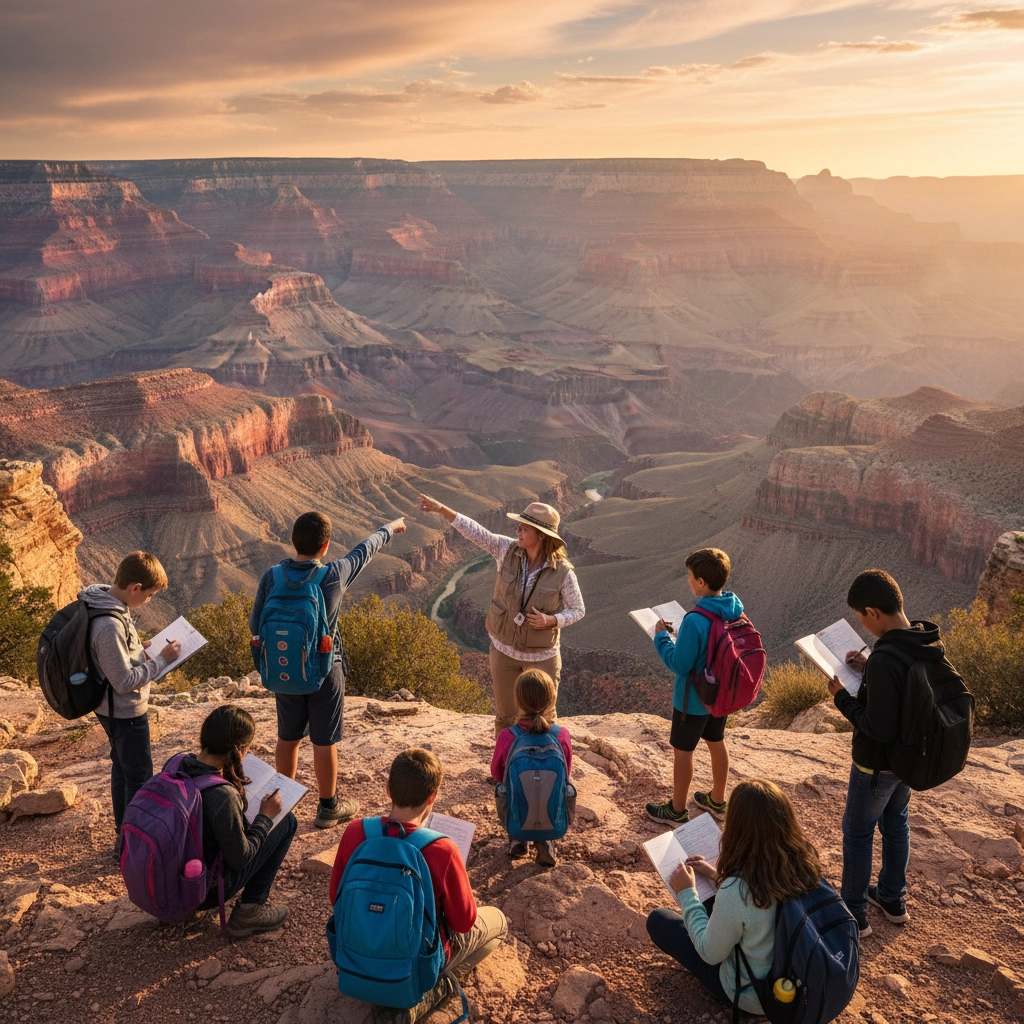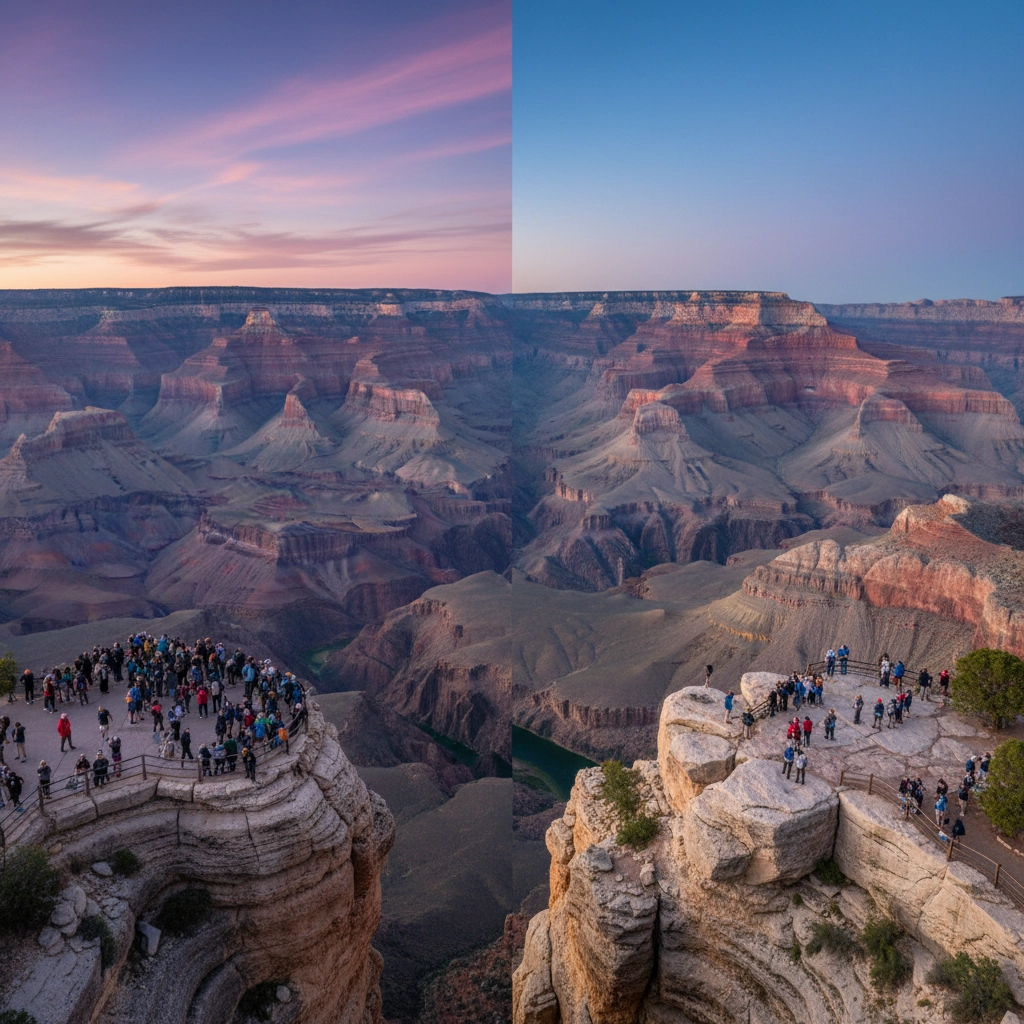7 Mistakes You are Making with Educational Trip Planning to Grand Canyon (and How to Fix Them)
- Caleb Mullenix
- Oct 20
- 5 min read
Planning an educational trip to the Grand Canyon requires meticulous attention to detail and strategic foresight. Many educators unknowingly compromise their students' learning experience by making preventable mistakes during the planning process. Ensuring your students receive maximum educational value from this natural wonder demands careful preparation and awareness of common pitfalls.
The following seven mistakes consistently undermine educational trips to the Grand Canyon. By addressing these issues systematically, you will transform your excursion from a superficial sightseeing tour into a profound learning experience that students will remember throughout their academic careers.
Mistake #1: Allocating Insufficient Time at the Park
The most critical error educators make is treating the Grand Canyon as a brief photo opportunity rather than an immersive educational environment. Research indicates that average visitors spend only 17 minutes actually observing the canyon, with many educational groups allocating merely 5-7 hours total for their entire visit.
This rushed approach completely undermines the educational objectives of your trip. Students cannot absorb the geological, historical, and ecological lessons the Grand Canyon offers when hurried from viewpoint to viewpoint without adequate time for observation and reflection.
How to Fix It:
Plan for a minimum of one full day at the park, preferably extending to multiple days
Schedule specific time blocks for ranger-led educational programs
Incorporate Junior Ranger activities for younger students
Allow sufficient time at multiple viewpoints to showcase different geological features
Build in reflection periods where students can process and discuss their observations

Mistake #2: Bypassing Educational Infrastructure and Resources
Many groups proceed directly to overlooks without utilizing the park's extensive educational facilities. The Visitor Center provides crucial foundational knowledge through informative films and exhibits, while the Yavapai Museum of Geology offers essential context for understanding the canyon's formation.
Skipping these resources leaves students without the background knowledge necessary to fully comprehend what they are observing at the canyon rim.
How to Fix It:
Begin every educational visit at the Visitor Center to establish foundational understanding
Incorporate the educational film into your itinerary as a structured learning activity
Plan the 2.1-mile developed pathway walk to the Village, including a mandatory stop at the Yavapai Museum of Geology
Assign specific learning objectives for each educational facility visit
Prepare pre-visit materials that align with the information students will encounter
Mistake #3: Restricting the Experience to Rim-Level Viewing
Limiting your educational experience exclusively to rim viewpoints prevents students from truly understanding the canyon's scale, geological diversity, and ecosystem variations. Failing to descend below the rim represents a significant missed educational opportunity.
Students cannot fully grasp the canyon's magnitude or appreciate the geological story revealed in its rock layers without experiencing different elevations and perspectives.
How to Fix It:
Incorporate supervised hiking into your educational itinerary, even for short distances
Select appropriate trails such as Bright Angel or South Kaibab from the South Rim
Emphasize that descending is optional, but returning to the rim is mandatory
Prepare students with proper hiking footwear and adequate water supplies
Plan hike timing to avoid extreme temperatures and ensure student safety
Assign specific geological observations for different trail elevations

Mistake #4: Ignoring the Colorado River Educational Component
The Colorado River carved the Grand Canyon over millions of years, yet many educational groups never engage with this fundamental element of the canyon's geological story. River experiences offer unparalleled lessons in geology, ecology, and exploration history.
Omitting this component means students miss understanding the primary force responsible for the canyon's creation and ongoing evolution.
How to Fix It:
Research river trip options appropriate for your group size and timeline
Consider shorter river experiences if multi-day expeditions exceed your budget
Integrate Colorado River studies into pre-trip curriculum preparation
Connect river experiences to historical exploration narratives
Use river perspectives to teach about erosion, geological time, and natural processes
Mistake #5: Inadequate Advance Planning and Reservation Management
Educational groups frequently underestimate the advance planning required for Grand Canyon visits. Last-minute arrangements severely limit your options and force compromises that weaken the educational experience.
The Grand Canyon's popularity demands strategic planning well in advance of your intended visit dates.
How to Fix It:
Begin planning 6-12 months in advance for large educational groups
Secure accommodations early, particularly during peak visiting seasons
Reserve spots in ranger programs and educational activities immediately upon availability
Obtain necessary permits for any backcountry educational experiences
Create detailed itineraries while maintaining flexibility for weather adaptations
Establish emergency contact procedures and contingency plans

Mistake #6: Limiting Educational Exposure to the South Rim Only
While the South Rim offers accessibility and infrastructure advantages, restricting your visit to this area means missing valuable comparative learning opportunities. Only 10% of Grand Canyon visitors experience the North Rim, yet both locations provide distinct educational value.
Students benefit from comparing different perspectives of the same geological formation and experiencing varying environmental conditions within the same ecosystem.
How to Fix It:
Plan visits to both rims if your timeline permits extensive exploration
Alternatively, dedicate your entire trip to the less-crowded North Rim for deeper immersion
Use different vantage points to teach about perspective and scientific observation
Compare and contrast the ecological differences between rim environments
Emphasize how geographic position influences climate, vegetation, and wildlife
Mistake #7: Failing to Address Weather Considerations and Safety Protocols
Educational trip leaders sometimes inadequately prepare for the Grand Canyon's extreme temperature variations and safety requirements. Summer temperatures at the canyon bottom can reach 120°F, while the North Rim receives substantial winter snow requiring road closures.
Poor weather preparation results in cancelled activities, student discomfort, and potential safety incidents that compromise the entire educational experience.
How to Fix It:
Research seasonal conditions thoroughly and plan your visit timing accordingly
Schedule outdoor activities for early morning hours to avoid extreme afternoon temperatures
Pack appropriate gear including sunscreen, layered clothing, and substantial water supplies
Brief all students and chaperones on comprehensive safety protocols
Establish clear procedures for staying back from canyon edges
Train supervisors to recognize signs of heat exhaustion and dehydration
Consider spring or fall visits for more moderate temperatures and optimal learning conditions
Develop detailed emergency response procedures specific to Grand Canyon conditions
Ensuring Educational Success Through Proper Preparation
By systematically addressing these seven common mistakes, you will transform your Grand Canyon educational trip from a superficial sightseeing excursion into a profound learning experience. Proper preparation ensures that students engage meaningfully with this natural wonder while maintaining safety as the paramount concern.
Remember that successful educational trips require extensive advance planning, comprehensive safety protocols, and strategic use of available educational resources. Your attention to these details will create lasting memories and meaningful learning experiences that students will carry with them throughout their academic careers and beyond.
The Grand Canyon offers unparalleled opportunities for hands-on learning in geology, ecology, history, and environmental science. Ensure your students receive maximum educational benefit by avoiding these preventable planning mistakes and implementing the systematic solutions provided above.



Comments